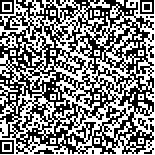| 引用本文: | 周璐,黄卫东,孙立军,吕泉,张翛.沥青自愈合性能影响因素探究及CT扫描细观分析[J].哈尔滨工业大学学报,2021,53(9):1.DOI:10.11918/202008083 |
| ZHOU Lu,HUANG Weidong,SUN Lijun,Lü Quan,ZHANG Xiao.Influence factors of asphalt self-healing performance and micro-analysis by CT scanning[J].Journal of Harbin Institute of Technology,2021,53(9):1.DOI:10.11918/202008083 |
|
| |
|
|
| 本文已被:浏览 1688次 下载 1289次 |

码上扫一扫! |
|
|
| 沥青自愈合性能影响因素探究及CT扫描细观分析 |
|
周璐1,2,黄卫东1,2,孙立军1,2,3,吕泉1,2,3,张翛4
|
|
(1.道路与交通工程教育部重点实验室(同济大学),上海 201804;2. 同济大学 交通运输工程学院,上海 201804; 3.上海市轨道交通结构耐久与系统安全重点实验室(同济大学),上海 201804;4.太原理工大学 土木工程学院,太原 030024)
|
|
| 摘要: |
| 为了直观研究沥青的自愈合性能,采用BBS(binder bond strength)拉拔实验探究温度、水分、老化及改性剂对沥青自愈合性能的影响,并利用CT(computed tomography)扫描实验,从细观角度观测沥青在不同条件下的自愈合进程。BBS实验结果表明:较高温度与干燥条件有利于沥青的自愈合,水分不利于沥青的短期与长期愈合,但能够提高中期阶段的愈合率;4.5%(质量分数)SBS改性沥青的愈合性能与多次破坏-愈合循环后的稳定强度均低于基质沥青,且其愈合性能对老化作用的敏感度较低。CT实验结果表明沥青的愈合进程主要包括“聚合、圆润化及外移”三特征。CT扫描图像验证了高温干燥条件对沥青自愈合的有利影响及对SBS改性剂的不利影响。 |
| 关键词: 沥青自愈合 拉拔实验 CT扫描 界面愈合 细观分析 |
| DOI:10.11918/202008083 |
| 分类号:U414 |
| 文献标识码:A |
| 基金项目:国家自然科学基金(1,6) |
|
| Influence factors of asphalt self-healing performance and micro-analysis by CT scanning |
|
ZHOU Lu1,2,HUANG Weidong1,2,SUN Lijun1,2,3,Lü Quan1,2,3,ZHANG Xiao4
|
|
(1. Key Laboratory of Road and Traffic Engineering of Ministry of Education (Tongji University), Shanghai 201804, China; 2. College of Transportation Engineering, Tongji University, Shanghai 201804, China; 3. Shanghai Key Laboratory of Rail Infrastructure Durability and System Safety (Tongji University), Shanghai 201804, China; 4. College of Civil Engineering, Taiyuan University of Technology, Taiyuan 030024, China)
|
| Abstract: |
| To intuitively investigate the self-healing performance of asphalt, binder bond strength (BBS) test was conducted to study the influence of temperature, moisture, aging, and SBS modifier on the self-healing performance of asphalt. The healing process of asphalt under different healing conditions was observed by computed tomography (CT) test. BBS test results showed that higher temperature and dry condition were conducive to the asphalt self-healing performance. Moisture was disadvantageous to the short-term and long-term healing of asphalt, but could improve the healing ratio during the mid-term of the healing process. The healing behavior and the stabilized healing strength of 4.5% (mass fraction) SBS-modified asphalt after multiple failure-healing cycles were lower than those of base asphalt, and the healing performance of SBS-modified asphalt was less sensitive to aging. CT scanning results showed that the healing process of asphalt mainly included three steps: gathering, rounding, and moving. CT images confirmed the favorable effect of higher temperature and dry condition on asphalt self-healing and the adverse effect on SBS modifier. |
| Key words: asphalt self-healing binder bond strength test CT scanning interface healing micro-analysis |
|
|
|
|







